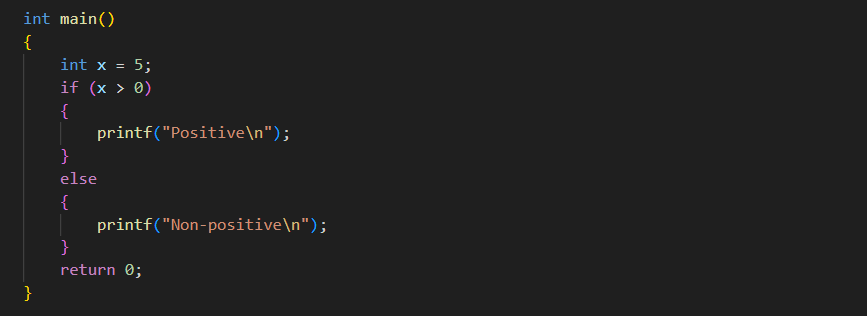Indentation is a fundamental aspect of code formatting that greatly influences the readability and maintainability of C programming. The way you structure your code visually impacts how easily others can understand and collaborate on your code. In this blog, we will delve into the world of indentation styles in C programming, examining various approaches, their pros and cons, and when to use them. Whether you’re a seasoned developer or just starting with C, understanding these indentation styles is essential for writing clean and organized code.
Why Is Indentation Important?
Before we explore different indentation styles, let’s understand why indentation is crucial in programming:
- Readability: Proper indentation makes code more readable by visually representing the code’s structure. It helps distinguish between different levels of nesting, making it easier to follow the logic.
- Maintainability: Well-indented code is easier to maintain and debug. When issues arise, developers can quickly identify and fix problems, reducing the time spent on troubleshooting.
- Collaboration: A consistent indentation style ensures that all team members can understand and work with the code efficiently in team projects. It fosters collaboration and reduces friction.
- Code Reviews: During code reviews, clean and well-indented code is more likely to receive positive feedback. It reflects professionalism and attention to detail.
Now, let’s explore some popular indentation styles in C programming.
1. K&R Style (Kernighan and Ritchie)
The K&R style, named after Brian Kernighan and Dennis Ritchie, the creators of C, is one of the earliest coding styles. It emphasizes minimalistic formatting, compact indentation, and efficient use of whitespace. This style is the foundation for many other coding styles.
Brace Placement and Indentation:
- Opening braces for functions are placed on the next line but at the same indentation level as the function header.
- Statements within the braces are indented.
- Closing braces for functions are placed on lines of their own, typically aligned with the function header.

Advantages:
- Simple and minimalistic code appearance.
- Consistency within code.
Disadvantages:
- Limited support for modern readability features.
- Less suitable for more complex code structures.
IDEs that Incorporate K&R Style: Visual Studio, Eclipse
2. Allman Style (BSD Style)
The Allman Style, named after Eric Allman, is a coding style known for its distinctive placement of braces and indentation rules. Eric Allman, who contributed significantly to the development of BSD Unix and wrote many utilities for it, is the namesake of this style. It should not be confused with the “BSD KNF style,” which is a different coding style used in the BSD Unix community.
Brace Placement and Indentation:
- In the Allman Style, the brace associated with a control statement is placed on the next line, indented to the same level as the control statement.
- Statements within the braces are indented to the next level.

IDEs that Incorporate Allman Style: Notepad++, Geany
Advantages:
- Enhanced readability due to clear separation of code blocks.
- Improved visual structure.
Disadvantages:
- Increased vertical space usage.
- Additional lines are required for braces, affecting code length.
3. GNU Style (GNU Coding Standards)
The GNU style is used in programming that emphasizes specific conventions for code formatting. Richard Stallman popularizes this style and is notable for its placement of braces and indentation. Here’s an overview of the key characteristics and aspects of the GNU Style:
Brace Placement:
- In the GNU style, opening braces ‘{‘ are placed on a line by themselves, indented by two spaces.
- An exception is made when opening a function definition, where the opening brace is not indented.
- In either case, the contained code is indented by two spaces from the braces.

IDEs that Incorporate GNU Style: Emacs, Vim
Advantages:
- The GNU style combines some advantages of both the Allman and Whitesmiths styles.
- It removes the possible Whitesmiths disadvantage of braces not standing out from the block.
- It provides clear indentation for contained code.
Disadvantages:
- One disadvantage is that the ending brace no longer lines up with the statement it conceptually belongs to.
- There is a possibility of wasting space by using two visual levels of indents for one conceptual level. However, this is unlikely to be a significant issue, as systems with single-level indentation typically use at least 4 spaces per level, which is equivalent to 2 * 2 spaces in the GNU style.
4. Whitesmiths Style
The Whitesmiths Style, sometimes referred to as the Wishart style, is a coding style with historical significance in the world of C programming. It was originally used in the documentation for the first commercial C compiler, the Whitesmiths Compiler.
Brace Placement:
- In the Whitesmiths Style, the brace associated with a control statement is placed on the next line and indented.
- Statements within the braces are indented to the same level as the braces.

IDEs that Incorporate Whitesmiths Style: Code::Blocks, Dev-C++
Advantages:
- This style shares advantages with the Allman style. Blocks are clearly set apart from control statements.
- The alignment of braces with the block emphasizes that the entire block is one compound statement.
- Indenting the braces emphasizes their subordinate nature to the control statement.
Disadvantages:
- Increased vertical space usage.
- Extra lines for braces and indentation.
PDF Download Link: http://embedthreads.com/wp-content/uploads/2023/10/Indentation-Styles-in-C-Programming.pdf
This blog post aims to provide an overview of different indentation styles and their application in C programming. Good luck with your coding!
👉 Debunking Common Myths About C++ in Embedded Systems -Part1 👈
Source Code Formatter : Curlie

